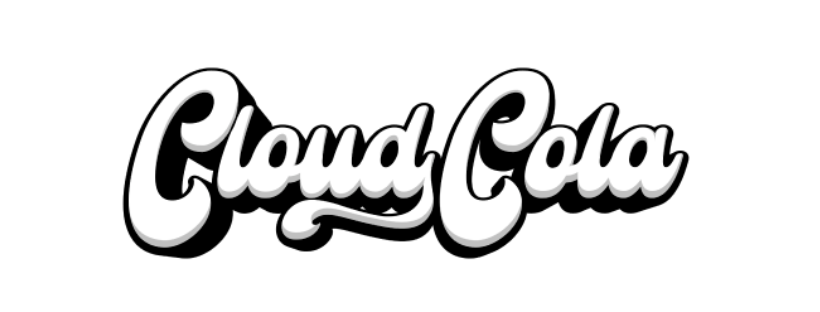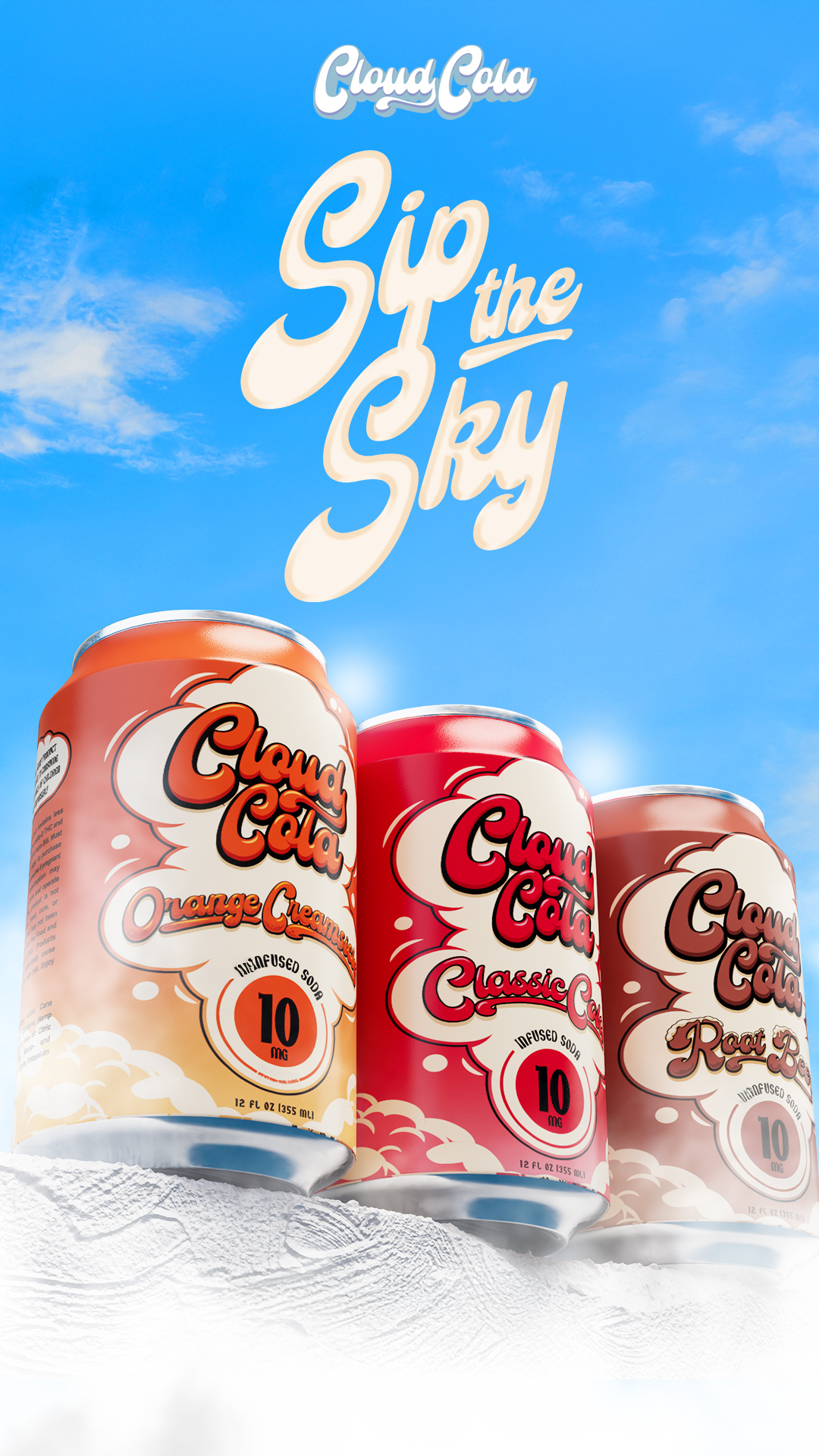THC Effects on Appetite
THC, the primary psychoactive compound in cannabis, has long been associated with increased appetite, commonly known as “the munchies.” This phenomenon occurs due to THC’s interaction with the endocannabinoid system, which plays a role in regulating appetite and pleasure. While consuming cannabis edibles, particularly those containing THC, is often linked to heightened cravings, the impact of THC-infused beverages like soda on appetite remains a subject of interest.
Understanding the Endocannabinoid System
The endocannabinoid system (ECS) is a complex network of receptors, enzymes, and neurotransmitters found throughout the body. It plays a crucial role in maintaining homeostasis, or balance, by regulating various physiological processes, including appetite, mood, sleep, and pain perception. One key component of the ECS are cannabinoid receptors, primarily CB1 and CB2. THC binds to these receptors, particularly CB1 receptors concentrated in the brain, influencing the way nerve cells communicate.
When THC binds to CB1 receptors in the hypothalamus, a region of the brain responsible for regulating appetite, it disrupts the normal signaling pathways that control hunger and satiety. This disruption can lead to increased feelings of hunger and cravings for food, resulting in the characteristic “munchies” associated with cannabis consumption.
THC’s Interaction with CB1 Receptors
The endocannabinoid system (ECS) is a complex network of receptors, enzymes, and neurotransmitters found throughout the body. It plays a crucial role in maintaining homeostasis, or balance, by regulating various physiological processes, including appetite, mood, sleep, and pain perception. One key component of the ECS are cannabinoid receptors, primarily CB1 and CB2. THC binds to these receptors, particularly CB1 receptors concentrated in the brain, influencing the way nerve cells communicate.
When THC binds to CB1 receptors in the hypothalamus, a region of the brain responsible for regulating appetite, it disrupts the normal signaling pathways that control hunger and satiety. This disruption can lead to increased feelings of hunger and cravings for food, resulting in the characteristic “munchies” associated with cannabis consumption.
Appetite Stimulation Pathways
THC’s influence on appetite stems from its interaction with the endocannabinoid system (ECS), a complex network that regulates various bodily functions including hunger and satiety. The ECS comprises cannabinoid receptors, primarily CB1 and CB2, which THC binds to.
CB1 receptors are particularly abundant in the brain, including the hypothalamus, a region crucial for appetite control. When THC binds to these receptors, it disrupts the normal signaling pathways that govern hunger and fullness. This disruption leads to increased feelings of hunger and cravings, resulting in the well-known “munchies” often associated with cannabis consumption.
The Connection Between THC and “Munchies”
THC, the primary psychoactive compound in cannabis, is renowned for triggering increased appetite, commonly known as “the munchies.” This phenomenon occurs because THC interacts with the endocannabinoid system (ECS), a complex network that plays a vital role in regulating appetite and pleasure. The ECS comprises cannabinoid receptors, particularly CB1 receptors concentrated in the brain. When THC binds to these receptors, it disrupts the normal signaling pathways that control hunger and satiety, leading to heightened cravings and feelings of hunger.
Commonly Experienced Food Cravings
THC’s influence on appetite stems from its interaction with the endocannabinoid system (ECS), a complex network that regulates various bodily functions including hunger and satiety. The ECS comprises cannabinoid receptors, primarily CB1 and CB2, which THC binds to.
CB1 receptors are particularly abundant in the brain, including the hypothalamus, a region crucial for appetite control. When THC binds to these receptors, it disrupts the normal signaling pathways that govern hunger and fullness. This disruption leads to increased feelings of hunger and cravings, resulting in the well-known “munchies” often associated with cannabis consumption.
- THC binds to CB1 receptors in the hypothalamus, a region of the brain responsible for regulating appetite
- This binding disrupts the normal signaling pathways that control hunger and satiety
- As a result, increased feelings of hunger and cravings for food occur, leading to the “munchies”
Triggers for Increased Appetite
THC’s effects on appetite are mediated through its interaction with the endocannabinoid system (ECS), a complex network of receptors, enzymes, and neurotransmitters involved in regulating various physiological processes, including hunger. The ECS contains two primary types of cannabinoid receptors: CB1 and CB2. CB1 receptors are predominantly found in the brain and central nervous system, while CB2 receptors are more prevalent in the immune system.
THC binds to CB1 receptors, particularly those located in the hypothalamus, a region of the brain responsible for controlling appetite and satiety. This binding disrupts the normal signaling pathways that regulate hunger and fullness, leading to increased feelings of hunger and cravings.
Furthermore, THC can influence dopamine release in the reward pathway, which reinforces pleasurable experiences, including food consumption. This neurochemical interplay contributes to the heightened desire for food often associated with cannabis use.
Individual Variability in Response to THC
THC’s impact on appetite stems from its interaction with the endocannabinoid system (ECS), a complex network responsible for regulating various bodily functions, including hunger and pleasure. The ECS comprises cannabinoid receptors, primarily CB1 and CB2. THC binds to these receptors, particularly CB1 receptors concentrated in the brain.
- THC binds to CB1 receptors in the hypothalamus, a brain region controlling appetite.
- This binding disrupts the normal signaling pathways that regulate hunger and fullness.
- The result is increased feelings of hunger and cravings for food, leading to the “munchies.”
Individual responses to THC vary widely. Factors influencing this variability include:

- Genetics:
- Body mass index (BMI):
- Tolerance level:
- Method of consumption:
- Mental state and environment.
What to Expect When Drinking THC Soda
THC-infused sodas offer a novel way to consume cannabis, but their impact on appetite is still being explored. While THC is well-known for inducing “the munchies,” it’s unclear if this effect is as pronounced with beverages compared to edibles like gummies or brownies. This article delves into the science behind THC and its interaction with the endocannabinoid system, exploring what to expect in terms of appetite changes after consuming THC soda.
Onset of Effects and Timeline
The onset of effects from THC soda typically occurs within 30 to 60 minutes. This timeline can vary depending on factors such as individual metabolism, consumption amount, and the specific formulation of the beverage.
The duration of effects can last for several hours, with peak effects usually felt around 1 to 2 hours after consumption. The overall experience may include euphoria, relaxation, altered sensory perception, and changes in appetite.
Intensity of Appetite Stimulation
THC’s interaction with the endocannabinoid system (ECS) is responsible for its appetite-stimulating effects. When THC binds to CB1 receptors in the hypothalamus, a brain region regulating hunger, it disrupts normal signaling pathways that control satiety. This disruption leads to increased feelings of hunger and cravings, commonly known as “the munchies.”
The intensity of appetite stimulation from THC soda can vary significantly based on several factors. These include the concentration of THC in the beverage, individual tolerance levels, body mass index, and even the individual’s mood and environment.
Some individuals may experience a mild increase in hunger after consuming THC soda, while others may experience intense cravings for specific foods. It’s important to note that these effects are temporary and typically subside as the THC wears off.
Potential Side Effects Beyond Munchies
While THC is renowned for triggering “the munchies,” its impact on appetite when consumed in a beverage form like soda is less clear compared to edibles like gummies or brownies.
The onset of effects from THC soda usually takes 30 to 60 minutes and can last for several hours. Peak effects typically occur around 1 to 2 hours after consumption.
Beyond the classic “munchies,” THC’s influence on appetite can manifest in other ways. Some individuals might experience:
- Changes in taste perception: THC can alter your sense of taste, making certain foods seem more appealing or less palatable.
- Cravings for specific food types: You might find yourself craving sweet, salty, or fatty foods more intensely.
- Increased thirst: THC can have a dehydrating effect, leading to increased thirst and possibly affecting your food choices.
It’s important to remember that individual responses to THC vary greatly. Factors like genetics, body mass index, tolerance levels, consumption amount, and even mental state can influence how your appetite is affected.
Managing “Munchies” Induced by THC Soda
The intoxicating effects of THC, the main psychoactive compound in cannabis, are well-documented, but its impact on appetite remains a topic of interest. Commonly referred to as “the munchies,” this phenomenon often accompanies cannabis consumption and has led to questions about whether THC-infused beverages like soda carry the same appetite-stimulating potential.
Strategies for Moderation and Control
Managing “munchies” induced by THC soda requires a combination of moderation, awareness, and planning.
Moderation is key when consuming any cannabis product, especially those with fast-acting effects like sodas. Start with a low dose and gradually increase it as needed to gauge your individual tolerance and response.
Being mindful of your environment and triggers can also help prevent overindulgence. Avoid situations where you’re likely to be tempted by unhealthy snacks, and stock up on healthy alternatives like fruits, vegetables, and nuts.

Planning ahead is crucial. If you know you’ll be consuming THC soda, have a stash of nutritious snacks readily available to satisfy your cravings without compromising your health.
Healthy Snack Options for THC Consumption
Managing “munchies” induced by THC soda involves mindful consumption, preparation, and healthy choices.
Start with a low dose and gradually increase it as you understand your tolerance. Being aware of your environment and potential triggers can help prevent overindulging. Avoid situations where unhealthy snacks are readily available and stock up on nutritious alternatives like fruits, vegetables, and nuts.

Planning ahead is key. If you anticipate consuming THC soda, have a supply of healthy snacks ready to satisfy cravings without compromising your well-being.
Here are some healthy snack options to consider when enjoying THC soda:
- Fruits: Apples, bananas, berries, and melons provide natural sweetness and fiber.
- Vegetables with Dip: Carrot sticks, celery, bell peppers, and cucumber slices paired with hummus or guacamole offer a crunchy and flavorful option.
- Nuts and Seeds: Almonds, cashews, walnuts, sunflower seeds, and pumpkin seeds are packed with healthy fats, protein, and fiber.
- Yogurt Parfait: Layer yogurt with granola and berries for a satisfying and protein-rich snack.
- Hard-Boiled Eggs: A simple yet nutritious choice that provides protein and essential nutrients.
Tips for Preventing Unwanted Weight Gain
Managing “munchies” induced by THC soda involves mindful consumption, preparation, and healthy choices. Start with a low dose and gradually increase it as you understand your tolerance. Being aware of your environment and potential triggers can help prevent overindulging. Avoid situations where unhealthy snacks are readily available and stock up on nutritious alternatives like fruits, vegetables, and nuts.
Planning ahead is key. If you anticipate consuming THC soda, have a supply of healthy snacks ready to satisfy cravings without compromising your well-being.
Here are some healthy snack options to consider when enjoying THC soda:
- Fruits: Apples, bananas, berries, and melons provide natural sweetness and fiber.
- Vegetables with Dip: Carrot sticks, celery, bell peppers, and cucumber slices paired with hummus or guacamole offer a crunchy and flavorful option.
- Nuts and Seeds: Almonds, cashews, walnuts, sunflower seeds, and pumpkin seeds are packed with healthy fats, protein, and fiber.
- Yogurt Parfait: Layer yogurt with granola and berries for a satisfying and protein-rich snack.
- Hard-Boiled Eggs: A simple yet nutritious choice that provides protein and essential nutrients.
Find top-rated THC soda flavors
- Does THC Soda Cause Munchies? What To Expect After Drinking - May 9, 2025
- Brow Lift Treatment Near Selhurst, Surrey - May 9, 2025
- Exosome Therapy For Skin Rejuvenation Near Headley, Surrey - May 9, 2025
